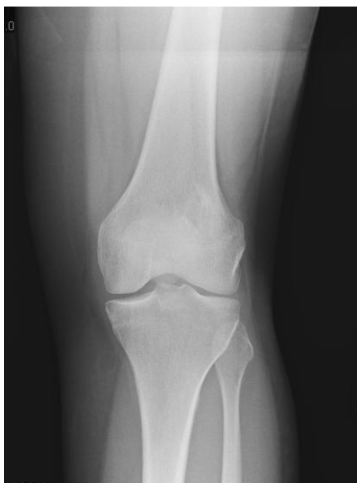Low-Grade Intraosseous Osteosarcoma
Low-Grade Intraosseous Osteosarcoma is a malignant, or cancerous, bone tumor that most commonly affects the long bones. It is a type of bone sarcoma and one of the rare types of osteosarcomas.

Low-Grade Intraosseous Osteosarcoma is a malignant, or cancerous, bone tumor that most commonly affects the long bones. It is a type of bone sarcoma and one of the rare types of osteosarcomas.





Low-grade intraosseous osteosarcoma is a malignant, or cancerous, bone tumor that most commonly affects the long bones. Low-grade means that it is relatively slow growing, rarely spreads to other sites and is not treated with chemotherapy or radiation in comparison to the standard high grade type of osteosarcoma. Most of the cells look very similar to normal cells under the microscope and indicates that the tumor is slow-growing. Low-grade intraosseous osteosarcoma may be misdiagnosed for fibrous dysplasia, low-grade fibrosarcomas, parosteal osteosarcoma, or other benign lucent lesions such as osteoblastoma, chondroblastoma, giant cell tumor and non ossifying fibroma depending on location because biopsy of the tissue can all look similar under a microscope.





Low-grade intraosseous osteosarcoma is a cancerous bone sarcoma. There are several risks associated with this bone sarcoma, including the risk of metastasis, pathological fracture, and the loss of a limb. Proper and effective treatment is necessary, because without treatment the sarcoma may destroy the bone and/or result in a pathological fracture. Additionally, the sarcoma may continue to grow to a large size and require an amputation. And lastly, it an spread to the lungs or other bones if not treated.
Differential diagnoses include fibrous dysplasia, low-grade fibrosarcomas, parosteal osteosarcoma, or other benign lucent lesions such as osteoblastoma, chondroblastoma, giant cell tumor and non ossifying fibroma depending on location. Therefore, radiographic imaging is used to help form a diagnosis. These include X-Ray, MRI, CT and Bone Scans.
An example of an MRI is shown.

Due to the potential metastasis and risks associated with low-grade intraosseous osteosarcoma, treatment is essential. The common treatment of low-grade intraosseous osteosarcoma includes limb-sparing surgery, including wide or radical resection of the sarcoma and a prosthesis. Chemotherapy and radiation are not as effective for low-grade tumors and are not indicated as long as the tumor is entirely low grade. Rarely does low-grade intraosseous osteosarcoma progress to a high-grade osteosarcoma.

Intralesional Curettage means to scoop the tumor out using a spoon-like tool called a curette. This is a surgery that aims to remove the mass and restore the bone so that the patient can get back to normal function. The ABC is identified within the bone and scooped, or curetted, out. The cavity is then shaved down with a Midas Rex Drill, which is similar to a dental drill. This drill removes more tumor cells.


I've seen many doctors and I can confidently attest Dr. Wittig is the preeminent orthopaedic specialist. He is genuinely kind and caring, as he demonstrated by completely addressing my concerns and compassionately relating to what I was dealing with. He clearly outlined the plan of attack, and recommended the two additional doctors who would become part of my 'team'. Dr. Wittig was so effective in allaying our fears and bringing us optimism. My surgery was significant, but I was up and walking the next day and back at the gym 5 weeks later. This is further testament to Dr. Wittig's skill. He saved my leg and my life, and I feel so very blessed to say he is my doctor. I have already recommended him to others, and I will continue to do so. I would trust him with my closest family and lifelong friends. BEST DOCTOR EVER.
S.G.

Myself and my amazing team are dedicated to saving your life and your limb. Losing a limb because of a tumor can be a terrifying experience. But, it does not have to be the only option. I’ve spent 20+ years as a Board-Certified Orthopedic Surgeon and Orthopedic Oncologist.
I’ve devoted my career to helping children and adults afflicted with bone and soft tissue masses by performing complex limb saving surgeries. Most patients can have their limb saved, which may require innovative techniques.
Patients afflicted with musculoskeletal tumors have complex conditions that are best taken care of at large hospitals. I am the Chairman of Orthopedics and Chief of Orthopedic Oncology at Morristown Medical Center. My philosophy is a multidisciplinary team approach, working together to tailor treatment to individual patients. Education and research are essential to my practice, providing the best setting for extraordinary patient care. Because of this, we have some of the top results in the country.